History
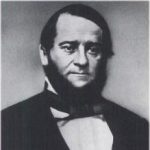 Following his marriage to a wealthy widow named Virginia Mason, Wilmer McLean moved onto her small plantation in Manassas Junction, Virginia. The property was beautiful, and a small stream called Bull Run ran through it. Fourteen slaves tended the fields of Yorkshire, named for the home county of English native Richard Blackburn who had established the plantation in the early 1700s. Little did Wilmer know at the time of his marriage, that in a mere eight years, their plantation would be the center of the beginning of the American Civil War.
Following his marriage to a wealthy widow named Virginia Mason, Wilmer McLean moved onto her small plantation in Manassas Junction, Virginia. The property was beautiful, and a small stream called Bull Run ran through it. Fourteen slaves tended the fields of Yorkshire, named for the home county of English native Richard Blackburn who had established the plantation in the early 1700s. Little did Wilmer know at the time of his marriage, that in a mere eight years, their plantation would be the center of the beginning of the American Civil War.
When the Civil War broke out in 1861, McLean was too old to serve on the Confederate Army, but that did not prevent his involvement in the war. When I think of the Civil War, I somehow think of two armies coming together out in the middle of nowhere in an open field. Of course, war isn’t that simple. War takes place in towns and villages and city streets too. When the two armies, the Union and the Confederates came to the place of their first battle, it would just happen to be ight in the middle of McLean’s plantation. The battle, the first major engagement between Union and Confederate forces, taking place in July 1861, would be remembered as the First Battle of Bull Run…fought right there at the stream on the McLean plantation.
As Union forces approached on a 30-mile march west from Washington DC, Confederate General P.G.T. Beauregard took over the Yorkshire Plantation farmhouse in Manassas as his headquarters. Soon, McLean took his family to safer ground, and the next day, July 18, 1861, during the Battle of Blackburn’s Ford, a Union shell tore into the fireplace of McLean’s detached kitchen and ruined the dinner being prepared for Beauregard and his staff. Three days later came the Civil War’s first major encounter, the First Battle of Bull Run. The barn quickly became a makeshift military hospital, housing both wounded Confederate soldiers and captured Union fighters. The men all shared the floor of the barn, which had become, in addition to the hospital, a prisoner of war jail, as well.
Yorkshire was ravaged in the battle, and when McLean had safely tucked his family far away from the battle, he returned alone to survey the damaged plantation. I’m sure it must have been a devastation blow to McLean, but he stayed worked as an unpaid Confederate quartermaster through February 1862, before reuniting with his wife and five children in the spring.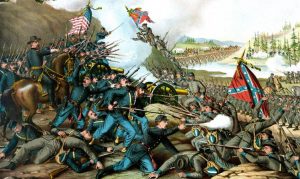
Back at home in Yorkshire in August 1862, McLean could not believe what he was seeing when the Second Battle of Bull Run began on the Yorkshire Plantation. It seemed that he just could not outrun the war and keep his plantation too. When the Union and Confederacy clashed once again in Manassas at the Second Battle of Bull Run in August 1862, McLean began to plan on a way to better protect his family from the war. In the fall of 1863, McLean moved his family 120 miles southwest to the quiet little town of Appomattox Court House on the other side of the state of Virginia. He purchased a beautiful house, originally built as a tavern in 1848, along the Lynchburg-Richmond State Road and regularly traveled on the nearby Southside Railroad to tend to his business supplying sugar to the Confederate army.
McLean thought he had finally managed to move his family to a place where they could live in peace and quiet, but little did he know that even in Appomattox, he could not outrun the Civil War. Once again, the Civil War came calling at his door again. On April 9, 1865, Confederate Colonel Charles Marshall rode into Appomattox Court House and asked the first man he spotted, who just happened to be McLean, to help him find a suitable home to hold a meeting between the Union and Confederate commanders. McLean showed him a place, but it was a pretty dilapidated, unfurnished brick house, and Marshall quickly rejected it. Reluctantly, McLean offered his own comfortable, well furnished home…hoping that this would not be a repeat of the beginning of the war, when his home was pretty close to being destroyed.
That afternoon, in pretty much the same place it had started…the McLean parlor, history was made as Confederate General Robert E. Lee surrendered his forces to Union General Ulysses S. Grant, marking the beginning of the end of the Civil War. McLean’s homes had become a “pair of bookends” to the long four year war. Like the first meeting between McLean and the army, this one would also not end well. As General Lee departed on his horse Traveler to break the news to his troops, the Union officers launched their final raid of the war by ransacking McLean’s parlor for souvenirs of the historic meeting. According to Civil War historian, Shelby  Foote, “Something close to pandemonium set in. As McLean protested, the Union entourage walked out with the tables and chairs used by Lee and Grant, a stone inkstand, brass candlesticks and even the favorite rag doll of his 7-year-old daughter, Lula. They tore apart McLean’s cane-bottomed chairs and cut upholstery strips from his sofas as mementoes. As compensation, the soldiers shoved money into the hands of the unwilling seller and threw it onto the floor when he refused to accept it.” War is an ugly thing, and men don’t always act in a gentlemanly way to the losers, or the winners. Nevertheless, the losers are often treated far worse than the winners, as has been seen in many a war.
Foote, “Something close to pandemonium set in. As McLean protested, the Union entourage walked out with the tables and chairs used by Lee and Grant, a stone inkstand, brass candlesticks and even the favorite rag doll of his 7-year-old daughter, Lula. They tore apart McLean’s cane-bottomed chairs and cut upholstery strips from his sofas as mementoes. As compensation, the soldiers shoved money into the hands of the unwilling seller and threw it onto the floor when he refused to accept it.” War is an ugly thing, and men don’t always act in a gentlemanly way to the losers, or the winners. Nevertheless, the losers are often treated far worse than the winners, as has been seen in many a war.
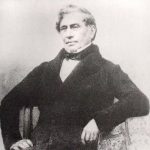 In the 1800s, women in medicine were nurses, and not well trained. They were often taught by a doctor, on the job. It was mostly because he needed help in his medical office. It was somehow decided that women just didn’t have the capability to be doctors, and the idea of a woman performing surgery was just beyond anyone’s comprehension. Be that as it may, women would soon become intent on finding a way to succeed in medicine with or without the help of men. Like it or not, the world was going to change, and women were going to spearhead some of that change.
In the 1800s, women in medicine were nurses, and not well trained. They were often taught by a doctor, on the job. It was mostly because he needed help in his medical office. It was somehow decided that women just didn’t have the capability to be doctors, and the idea of a woman performing surgery was just beyond anyone’s comprehension. Be that as it may, women would soon become intent on finding a way to succeed in medicine with or without the help of men. Like it or not, the world was going to change, and women were going to spearhead some of that change.
In 1865, a decorated surgeon named James Barry passed away from dysentery. That was not an unusual event in those days. Medical experts had not figured out exactly what to do for dysentery. Barry’s death was a sad thing for all those whose lives he had saved with his surgical skills. As often happened in those days, the family or the help was charged with preparing the body of the deceased for burial. When a housemaid began preparing Barry’s body for interment, she discovered a shocking secret. As it turned out, Dr Barry was not a man at all, she was a woman. Barry was born Margaret Ann Bulkley was born in Cork, Ireland, around 1789. The daughter of a grocer, Margaret grew up frustrated by the limits placed on her because of her gender. At just 18 years old, Margaret yelled at her brother, “Were I not a girl, I would be a soldier!” Of course, the idea of a woman, intelligent enough or not, going to medical school was forbidden. So, Margaret Bulkley, determined to become a surgeon, became James Barry. Even after graduating from medical school, she knew that she would have to continue the persona if she was going to have any patients.
In 1809, when Barry arrived at Edinburgh Medical School, one of the top medical schools in Europe, he wore a long overcoat and 3-inch shoe inserts. Fellow classmates remember Barry speaking in a high-pitched voice. Barry never took off his overcoat, even in summer, and stared down anyone who questioned his story. After graduation, he just continued the charade. For nearly 50 years, Dr. James Barry, disguised as a man, worked hard and became one of the top surgeons in the 19th century, but how did she manage to carry of such a deception for so many years? Someone must have known the truth. It’s hard to say if her desire to be a surgeon was just so strong that she would successfully carry out her plan, forsaking things like marriage and children, in favor of medicine, I’m sure that after a while, it just became easier to live as a man. The people of that era, obsessed with scandal speculated about Barry’s true identity and why the surgeon lied for decades. I’m sure all of the ladies had a great time with their afternoon tea parties.
When Dr. James Barry’s housemaid, Sophia Bishop discovered that Barry was biologically female, her screams could be heard all over the house. The undertakers were brought in and they quickly confirmed Barry’s secret. Like a flood, the news spread across the British Empire. Barry’s secret life raised a number of questions, starting with, how a nearly 5 foot tall woman was able to pass as a man for decades. Bulkley/Barry fooled everyone…for 50 long years. She was a surgeon ahead of her time. It’s just too bad that she couldn’t tell everyone that she, a woman, was a great surgeon too.
 World War II was finally winding down. Germany had surrendered. Japan was still a problem, but they were losing their strength too. Hitler committed suicide on April 30, and now it was over for Germany. I fact, it was time for celebration. So on May 8, 1945, both Great Britain and the United States celebrated Victory in Europe Day. The day would come to be known as V-E Day, and cities in both nations, as well as formerly occupied cities in Western Europe, put out flags and banners, rejoicing in the defeat of the oppressive Nazi war machine.
World War II was finally winding down. Germany had surrendered. Japan was still a problem, but they were losing their strength too. Hitler committed suicide on April 30, and now it was over for Germany. I fact, it was time for celebration. So on May 8, 1945, both Great Britain and the United States celebrated Victory in Europe Day. The day would come to be known as V-E Day, and cities in both nations, as well as formerly occupied cities in Western Europe, put out flags and banners, rejoicing in the defeat of the oppressive Nazi war machine.
That was 75 years ago today that the first V-E Day was celebrated. It is hard to believe that it was 75 years ago. I wasn’t born then, of course, but over the years of researching World War II, I almost feel like those events were just yesterday. Researching World War II bought the events…good, bad, and horrific to life for me. Our men and women, as well as those of the Allies were brave and noble people. They were fighting against two oppressive regimes, both of whom had murdered their own people and the people of the nations around them. The Nazi war machine had marched through Europe, terrorizing the people around them. The Luftwaffe planes bombed many cities, taking no concern for the civilians lost. Life meant nothing to them…except for their own. Hitler was greedy for power, and wanted to bring Nazism to the whole world. Thankfully they were stopped before they could complete their reign of terror.
German troops throughout Europe finally laid down their arms on May 8, 1945 in Prague. The Soviets had lost 8,000 soldiers by the time of the surrender, but the Germans had lost considerably more. They laid down their arms too, in Copenhagen and Oslo, at Karlshorst, near Berlin, in northern Latvia, and on the Channel Island of Sark. The German surrender was almost complete in that final cease-fire. More surrender documents were signed in Berlin and in eastern Germany.
The main concern of many German soldiers was to elude the grasp of Soviet forces, to keep from being taken prisoner. About 1 million Germans attempted a mass exodus to the West when the fighting in Czechoslovakia ended, but were stopped by the Russians and taken captive. The Russians captured approximately 2 million 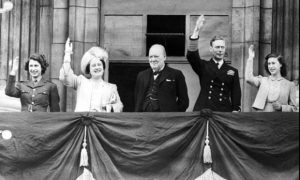 prisoners just before and after the German surrender. At the same time. 13,000 British soldiers were released and sent back to Great Britain. Of course, there were still pockets of confrontations into May 9th, and the Soviets lost an additional 600 soldiers in Silesia before the Germans finally surrendered. Those skirmishes pushed back the V-E Day celebration until the ninth in Moscow, with a radio broadcast salute from Stalin himself, “The age-long struggle of the Slav nations has ended in victory. Your courage has defeated the Nazis. The war is over.” It was a great day for all the people of the Allied nations, and the people of the world, with the exception of the Germans, Japanese, and the Axis nations. Good over evil.
prisoners just before and after the German surrender. At the same time. 13,000 British soldiers were released and sent back to Great Britain. Of course, there were still pockets of confrontations into May 9th, and the Soviets lost an additional 600 soldiers in Silesia before the Germans finally surrendered. Those skirmishes pushed back the V-E Day celebration until the ninth in Moscow, with a radio broadcast salute from Stalin himself, “The age-long struggle of the Slav nations has ended in victory. Your courage has defeated the Nazis. The war is over.” It was a great day for all the people of the Allied nations, and the people of the world, with the exception of the Germans, Japanese, and the Axis nations. Good over evil.
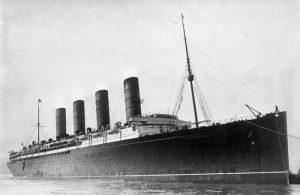 Most people have heard of the Titanic sinking, and how disaster could have been prevented, had they just slowed down, listened to the warnings, and had they had enough lifeboats. There is, however, another ship sinking that not so many people have heard of, or if they had, they didn’t pay much attention to. It is the Lusitania. Like the Titanic, the sinking of the Lusitania could have been prevented too, had a number of simple precautions been taken, such as not to sail at all that fateful May day in 1915.
Most people have heard of the Titanic sinking, and how disaster could have been prevented, had they just slowed down, listened to the warnings, and had they had enough lifeboats. There is, however, another ship sinking that not so many people have heard of, or if they had, they didn’t pay much attention to. It is the Lusitania. Like the Titanic, the sinking of the Lusitania could have been prevented too, had a number of simple precautions been taken, such as not to sail at all that fateful May day in 1915.
RMS Lusitania left New York for Britain on May 1, 1915, unfortunately during a time when German submarine warfare was intensifying in the Atlantic. On February 4, 1915, Germany had declared the seas around the United Kingdom a war zone, and the German embassy in the United States had placed newspaper advertisements warning people of the dangers of sailing on Lusitania. Not to defend the Germans, but they had warned people that they would attack all ships, military or passenger. Unfortunately, not many people boarding Lusitania that morning had time to read the paper before embarking on their journey. It amazes me that it was left to the people, who were told that the ship could outrun the German U-boats. They were also told that they 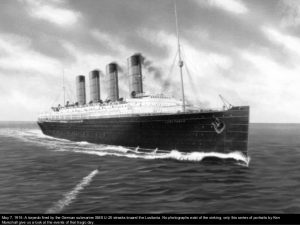 would have escort ships as they entered the war zone. And, they were told that the U-boats were not attacking neutral passenger liners. Unfortunately, these things were not factual. Part of the problem was that the Allies had begun disguising war ships as passenger ships on the assumption that the Germans would not attack passenger ships. Other passenger ships were actually used to transport soldiers and ammunition, or even just ammunition, in the thought that they would be safe from harm that way. The Allies were also supposed to have escort ships to take the passenger ships, but that did not happen in the case of the Lusitania.
would have escort ships as they entered the war zone. And, they were told that the U-boats were not attacking neutral passenger liners. Unfortunately, these things were not factual. Part of the problem was that the Allies had begun disguising war ships as passenger ships on the assumption that the Germans would not attack passenger ships. Other passenger ships were actually used to transport soldiers and ammunition, or even just ammunition, in the thought that they would be safe from harm that way. The Allies were also supposed to have escort ships to take the passenger ships, but that did not happen in the case of the Lusitania.
The sinking of the Cunard ocean liner RMS Lusitania occurred on Friday, May 7, 1915 during the First World War, as Germany waged submarine warfare against the United Kingdom which had implemented a naval blockade of Germany. The ship was identified and torpedoed by the German U-boat U-20 and sank in just 18 minutes, and also took on a heavy starboard list. The Lusitania went down 11 miles off the Old Head of Kinsale,  Ireland, killing 1,198 and leaving 761 survivors. The sinking turned public opinion in many countries against Germany, and it was a key element in the American entry into World War I. The torpedoing and subsequent sinking became an iconic symbol in military recruiting campaigns. The injustice of it brought about the outrage that would likely cause soldiers to enlist. Still, the United States did not immediately enter into the war. The American government first issued a severe protest to Germany…a waste of time really. Then, following immense pressure from the United States and recognizing the limited effectiveness of the policy, Germany abandoned unrestricted submarine warfare in September 1915.
Ireland, killing 1,198 and leaving 761 survivors. The sinking turned public opinion in many countries against Germany, and it was a key element in the American entry into World War I. The torpedoing and subsequent sinking became an iconic symbol in military recruiting campaigns. The injustice of it brought about the outrage that would likely cause soldiers to enlist. Still, the United States did not immediately enter into the war. The American government first issued a severe protest to Germany…a waste of time really. Then, following immense pressure from the United States and recognizing the limited effectiveness of the policy, Germany abandoned unrestricted submarine warfare in September 1915.
 Shortly after the Japanese attacked Pearl Harbor, they were bent on making the most of the advantage they had, or perceived to have had. As we know the advantage was much less than they thought it was, but the United States did need a little bit of time to regroup and prepare for their entrance into World War II. The invasion of the Philippines started on December 8, 1941, just ten hours after the attack on Pearl Harbor. The US military had just lost ships and personnel, and understandably, the Japanese saw the opportunity to take advantage of the chaos. As at Pearl Harbor, American aircraft were severely damaged in the initial Japanese attack on the Philippines. A lack of air cover, forced the American Asiatic Fleet in the Philippines withdrew to Java on December 12, 1941. General Douglas MacArthur was ordered out of harms way. He was sent to Australia, 2485 miles away, unfortunately leaving his men at Corregidor on the night of March 11, 1942. Cutting off supplies, the Japanese finally forced 76,000 starving and sick American and Filipino defenders in Bataan to surrender on April 9, 1942. They were then forced to endure the infamous Bataan Death March on which 7,000 to 10,000 people died or were murdered.
Shortly after the Japanese attacked Pearl Harbor, they were bent on making the most of the advantage they had, or perceived to have had. As we know the advantage was much less than they thought it was, but the United States did need a little bit of time to regroup and prepare for their entrance into World War II. The invasion of the Philippines started on December 8, 1941, just ten hours after the attack on Pearl Harbor. The US military had just lost ships and personnel, and understandably, the Japanese saw the opportunity to take advantage of the chaos. As at Pearl Harbor, American aircraft were severely damaged in the initial Japanese attack on the Philippines. A lack of air cover, forced the American Asiatic Fleet in the Philippines withdrew to Java on December 12, 1941. General Douglas MacArthur was ordered out of harms way. He was sent to Australia, 2485 miles away, unfortunately leaving his men at Corregidor on the night of March 11, 1942. Cutting off supplies, the Japanese finally forced 76,000 starving and sick American and Filipino defenders in Bataan to surrender on April 9, 1942. They were then forced to endure the infamous Bataan Death March on which 7,000 to 10,000 people died or were murdered.

The 13,000 survivors on the island of Corregidor surrendered on May 6, 1942. It was the last holdout against the Japanese in the Philippines. The surrender of the Philippines and Corregidor was not only a sad thing…it was a death sentence for many. The island of Corregidor under the command of General Jonathan Wainwright, was hit by constant artillery shelling and aerial bombardment attacks, which ate away at the American and Filipino defenders. The troops at Corregidor managed to sink many Japanese barges as they approached the northern shores of the island with necessary supplies, but finally, cut off from supplies, the Allied troops couldn’t hold the invader off any longer. General Wainwright, who had only recently been promoted to the rank of lieutenant general and commander of the US armed forces in the Philippines, offered to surrender Corregidor to Japanese General Homma, but Homma wanted the complete, unconditional surrender of all American forces throughout the Philippines. Wainwright had little choice given the odds against him and the poor physical condition of his troops. He had already lost 800 men. He surrendered at midnight. All 11,500 surviving Allied troops were evacuated to a prison stockade in Manila.
The Japanese did not care about any kind of proper treatment of the prisoners of war. Men were beaten, 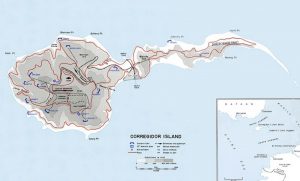 starved, and worked to death. Many of the men who surrendered at Corregidor were sent to Japan to work there. No one knew where they were, or even if they were still alive. At first, it was thought that they were in the prison camps, but people only later heard that their loved one was…who knew where. General Wainwright remained a POW until 1945. I’m sure the US government felt bad that they couldn’t help him, and so he was invited to the USS Missouri for the formal Japanese surrender ceremony on September 2, 1945. He was also be awarded the Congressional Medal of Honor by President Harry S Truman. Wainwright died in 1953…eight years to the day of the Japanese surrender ceremony.
starved, and worked to death. Many of the men who surrendered at Corregidor were sent to Japan to work there. No one knew where they were, or even if they were still alive. At first, it was thought that they were in the prison camps, but people only later heard that their loved one was…who knew where. General Wainwright remained a POW until 1945. I’m sure the US government felt bad that they couldn’t help him, and so he was invited to the USS Missouri for the formal Japanese surrender ceremony on September 2, 1945. He was also be awarded the Congressional Medal of Honor by President Harry S Truman. Wainwright died in 1953…eight years to the day of the Japanese surrender ceremony.
 Flood waters carry with them more damage than people imagine. Water just doesn’t seem like the force it can become. That was exactly what had happened in May of 1878. The flood waters came rushing down the creek overnight, and the force of the water had wiped out a bridge at Box Elder, Montana. The section foreman discovered the missing bridge and rushed to secure a red light for the purpose of signaling the Kansas Pacific freight train. He knew the train was due any minute. Before he could avoid the approaching disaster, the train thundered down upon the chasm left by the missing bridge, and into the torrent of wild waters below.
Flood waters carry with them more damage than people imagine. Water just doesn’t seem like the force it can become. That was exactly what had happened in May of 1878. The flood waters came rushing down the creek overnight, and the force of the water had wiped out a bridge at Box Elder, Montana. The section foreman discovered the missing bridge and rushed to secure a red light for the purpose of signaling the Kansas Pacific freight train. He knew the train was due any minute. Before he could avoid the approaching disaster, the train thundered down upon the chasm left by the missing bridge, and into the torrent of wild waters below.
The accident occurred about 12 o’clock that Tuesday night, three employees lost their lives, and a whole freight train was totaled. John Bacon, of Denver, who was the engineer; his fireman, Frank Sellvin, and another employee named John Piatt, were in the engine, and unable to escape. The whole train had eighteen cars. The fatal blow came when the car that was loaded with railroad iron, came to rest on top of the wreck, burying the men piled upon the wreck and buried the men. They might as well have been buried beneath a mountain. The crews knew it would be several days before they would be able to remove the bodies from the wreckage. Nevertheless, given the way the iron car fell on the engine, it was certain that the three men died instantaneously…or nearly so.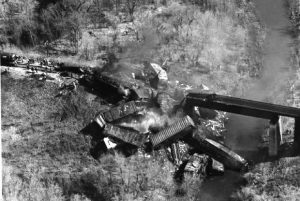
In a bizarre twist, the body of Frank Sellvin turned up, not under the wreckage, but a mile and a half from where that accident occurred. It appeared that he jumped from the engine as it fell. While trying to save himself, he was instead carried by the raging torrent out of the reach of the wreck, but not out of the clutches of the killer flood waters. By midnight the bodies of the other two men were still missing. It would be a while yet before their bodies would be found. Water seems like something so innocent, but when they become flood waters, they become killer waters.

 If you find yourself south of Cheyenne, Wyoming just north of the Colorado border, and you look to the east of I-25, you might be surprised to see several camels grazing in the fields there. The first time I saw it, I was very surprised, although it is not unheard of to bring animals from one area of the world to another, where it is not common to see such an animal. Nevertheless, it was not a sight that I had seen before.
If you find yourself south of Cheyenne, Wyoming just north of the Colorado border, and you look to the east of I-25, you might be surprised to see several camels grazing in the fields there. The first time I saw it, I was very surprised, although it is not unheard of to bring animals from one area of the world to another, where it is not common to see such an animal. Nevertheless, it was not a sight that I had seen before.
This isn’t the first time camels have spent time in the United States, however. In the mid-1800s, someone else came to the conclusion that camels might be a good alternative to horses or donkeys in the deserts of the Southwest. Camels can go for long periods of time without water, and I’m sure that fact played a part in the decision. The camels were to be used in Arizona, New Mexico, and the deserts of the Colorado River. Some thought it might be a way to revolutionize travel and transportation over the American deserts. That thought is almost insane, considering what I have heard of the temperament of camels.
Jefferson Davis of the Southern Confederacy was the chief promoter of the project. In the last session of Congress in 1851, the army appropriation bill was under consideration. Then, Senator Davis from Mississippi, offered an amendment providing for the purchase and introduction of 30 camels and 20 dromedaries…which are two-humped camels, with ten Arab drivers, and the necessary equipment. Davis spoke of how these animals were used just like donkeys in countries in Asia and Africa. He mentioned that they were used by the English in the East Indies for the transport of army supplies, and other places where their use had been touted.
Davis also thought camels might be used effectively against the Indians on our Western frontier, because they could drink enough water before they started a trip to last for one hundred miles. Then, the camels and soldiers would travel continually without the need of rest. Camels travel at a rate of ten to fifteen miles an hour, so they could catch up to these bands of Indians…a feat the cavalry had been unable accomplish.
The transport ability of the camel was not in question, because they could do the same things here that they were capable of doing in the East. Camels are used to eating brush and scrubs, and drinking the same kind of brackish water which existed in some portions of our Western deserts. In the end the group promoting the use of camels misjudged the workability of the camels…at least as it applied to their use without bringing the Arab handlers over to work the camels.
It seemed that the camel was going to be the greatest thing to arrive in years, but those who promoted the scheme, forgot about the downsides of using camel labor. One fatal mistake was that they figured only on the camel’s virtues. Camel’s can be uncooperative and difficult to work with. Another mistake they made was in not bringing in the Arab drivers with the camels. The people in America, who were going to be handling the camels really had no idea what they were up against. It was like telling an attorney to perform surgery. Both the American mule-whacker and the Arab camel driver were skilled at their jobs, but they were doing a job they were not trained for. It can become a recipe for disaster. From the very first meeting of the camel and the American mule-whacker, who was to be his driver, there developed between the two a mutual antipathy, and lets face it, antipathy is not a good thing in relation to working together to reach a goal. Really, to be a successful camel driver, a man must be born to the business. This is a trade that is often passed down from generation to generation.
The camel’s mild submissiveness, rather than appealing to his drivers, seemed instead to provoked them. They understood the vigorous kicking of an army mule in his protest against abuse, but the spiritless dejection and the mild-eyed pensiveness of the Arabian burden-bearer was exasperating. While the camel seemed to want to please, their ability to show pure meanness came to the forefront when pushed too far. One lone camel could stop the work of an entire herd simply by showing that his stubbornness was just as strong as that of a mule. Also, either they were clumsy when it can to close quarter or something, because when two of these heavily laden “ships of the desert” collided on a narrow trail, as they always did when an opportunity offered, tons of supplies were scattered over miles of plain and the unfortunate camel pilots had to gather up the cargo of the wreck. Whenever that happened, the handlers cursed the whole camel race.


I’ve never stopped in to see the camels at the Wyoming-Colorado border, so I don’t know if these camels are as contrary as the ones used in the 1800s, but I think it would be interesting to see a camel up close anyway. Maybe one of these days I will do just that. The Terry Bison Ranch’s custom-built trains take you to see ostriches, camels, a huge bison herd, and actually hand-feed the bison! Sounds interesting to me.
 My dad, Al Spencer loved trains. I’m sure it all started with his dad’s job as a carpenter on the Great Northern Railway. Dad and his siblings rode the trains to school and such. It was one of the perks of his dad’s job. I know most kids like trains, but I think Dad maybe liked them more than most kids. He grew up around them.
My dad, Al Spencer loved trains. I’m sure it all started with his dad’s job as a carpenter on the Great Northern Railway. Dad and his siblings rode the trains to school and such. It was one of the perks of his dad’s job. I know most kids like trains, but I think Dad maybe liked them more than most kids. He grew up around them.
On May 1, 1971, a very exciting event took place, especially for my dad. It was on that day that the Amtrak train was born. It was originally established by the Congressional Rail Passenger Service Act, which consolidated the United State’s existing 20 passenger railroads into one. Of course, most of us know that the Amtrak train has since had a long history…49 years to be exact. Back then the Amtrak train line served 43 states with a total of 21 routes. These days they not only handle traditional interstate passenger rail in 46 states, but they also operate high-speed trains along their busiest route, the Northeast Corridor from Washington DC, to Boston. With more than 500 destinations throughout a 21,000 mile system, Amtrak has grown to 33 routes across America. Nevertheless, the Amtrak train system was always focused on getting from Point A to Point B safely and swiftly, even in 1971.
From the time that first Amtrak rolled out of the station, my Dad was hooked. He knew he wanted to take a trip by way of that train. During the early years of the Amtrak, we heard a lot about it. It wasn’t going to be a trip that we went on as a family, but rather a special trip for Dad and Mom. That trip would finally happen in about 1991, when Mom and Dad took the Amtrak from San Diego to Seattle. My sister, Caryl Reed and her family lived there at the time, and they would spend time visiting with them after the train ride. My dad was so excited!! In fact, he was the epitome of “the kid in the candy shop.” I can see why he would be so excited. After  all, he had waited twenty years for that trip. I suppose that prior to that time, he couldn’t think of any reason to take the trip, but when my sister moved to Bremerton, Washington, the time had come. Mom and Dad made many trips to Washington in those years, but that trip on the Amtrak Train really was the most exciting way for them to travel.
all, he had waited twenty years for that trip. I suppose that prior to that time, he couldn’t think of any reason to take the trip, but when my sister moved to Bremerton, Washington, the time had come. Mom and Dad made many trips to Washington in those years, but that trip on the Amtrak Train really was the most exciting way for them to travel.
I can picture my dad now. Not how he looked. I have a picture of that. No…I can picture how he felt. He was that “kid in the candy store” again. I could picture him feeling like he was back in Superior, Wisconsin, hopping the train, even though he had a pass to ride the train.
 One of the most evil dictators of all time was Adolf Hitler. He not only wanted control of the world, but he decide that there were a number of people who had no right to live. To him, only the Aryan, or Master Race was of value. Hitler’s “Master Race” is a concept in Nazi ideology in which “the putative Nordic or Aryan races, predominant among Germans and other northern European peoples, are deemed the highest in racial hierarchy.” Hitler was obsessed with the idea of removing anyone who did not fit into that definition of the Master Race…especially the Jewish people.
One of the most evil dictators of all time was Adolf Hitler. He not only wanted control of the world, but he decide that there were a number of people who had no right to live. To him, only the Aryan, or Master Race was of value. Hitler’s “Master Race” is a concept in Nazi ideology in which “the putative Nordic or Aryan races, predominant among Germans and other northern European peoples, are deemed the highest in racial hierarchy.” Hitler was obsessed with the idea of removing anyone who did not fit into that definition of the Master Race…especially the Jewish people.
Hitler was insane, and in reality, insane is not a strong enough word for it. I don’t think that most of us could conceive of the level of evil that possessed Adolf Hitler. He didn’t care who died to bring about his plan for the world. He expected sacrifice from his people, unquestioned sacrifice. Meanwhile, Hitler himself was always safely hidden away…protected from his enemies…the people who disagreed with his evil cruelty. Hitler had often said that his Third Reich would be a 1,000-year Reich. He was determined to have a legacy that would span the ages. Well, he is remembered I suppose, but with disdain.
I’m sure Hitler had several places that he hid in, but one of them, a refurbished air-raid shelter seemed to be  his bunker of choice. Hitler had gone into his bunker on January 16, after deciding to remain in Berlin for the last great siege of the war. He knew he was losing, but coward that he was, had no intention of being arrested. Fifty-five feet under the chancellery, where as chancellor, he lived, was his shelter. It contained 18 small rooms and was fully self-sufficient, with its own water and electrical supply. During that time, he left only rarely (once to decorate a squadron of Hitler Youth) and spent most of his time micromanaging what was left of German defenses and entertaining such guests as Hermann Goering, Heinrich Himmler, and Joachim von Ribbentrop. At his side were Eva Braun and his dog, an Alsatian named Blondi.
his bunker of choice. Hitler had gone into his bunker on January 16, after deciding to remain in Berlin for the last great siege of the war. He knew he was losing, but coward that he was, had no intention of being arrested. Fifty-five feet under the chancellery, where as chancellor, he lived, was his shelter. It contained 18 small rooms and was fully self-sufficient, with its own water and electrical supply. During that time, he left only rarely (once to decorate a squadron of Hitler Youth) and spent most of his time micromanaging what was left of German defenses and entertaining such guests as Hermann Goering, Heinrich Himmler, and Joachim von Ribbentrop. At his side were Eva Braun and his dog, an Alsatian named Blondi.
Hitler was a coward, who put his men out on the front lines to do his evil bidding, while he hid behind the scenes, so that the opposing armies couldn’t get to him. He thought he had it all planned out. but as April 1945 came to a close, his “1,000 year Reich” was collapsing and enemy soldiers were closing in to shut him down. So, he married his long-time girlfriend, Eva Braun on April 28, 1945, and two days later they committed suicide together. He was warned by officers that the Russians were only a day or so from overtaking the chancellery.  They urged him to escape to Berchtesgarden, a small town in the Bavarian Alps where Hitler owned a home, but he instead chose suicide. It is believed that both he and his wife swallowed cyanide capsules…which had been tested for their efficacy on his “beloved” dog and her pups. Then, just to be sure, he shot himself with his service pistol. The couple’s bodies were cremated in the chancellery garden by the bunker survivors, as per Hitler’s orders and it was reported later that they were partially recovered by Russian troops. Still, that didn’t prove to many that he was dead. Finally, a German court officially declared Hitler dead in 1956. Finally the world was rid of a despicable piece of garbage.
They urged him to escape to Berchtesgarden, a small town in the Bavarian Alps where Hitler owned a home, but he instead chose suicide. It is believed that both he and his wife swallowed cyanide capsules…which had been tested for their efficacy on his “beloved” dog and her pups. Then, just to be sure, he shot himself with his service pistol. The couple’s bodies were cremated in the chancellery garden by the bunker survivors, as per Hitler’s orders and it was reported later that they were partially recovered by Russian troops. Still, that didn’t prove to many that he was dead. Finally, a German court officially declared Hitler dead in 1956. Finally the world was rid of a despicable piece of garbage.
 Imagine being forced to take action against your own business. Most of us couldn’t even begin to comprehend what could possibly bring about such an event, but it has happened in the past…unbelievably. On April 23, 1938, before the main Holocaust took place, but leading up to it for sure, Austria’s 200,000 Jews were thrown into a state of panic. The Nazi anti-Semitic movement was gaining momentum, the Hitler Youth were becoming more and more emboldened at the urging of their evil leader. Demonstrations were held, in front of the Jewish shops, and more often that not, the Jewish shopkeeper was forced to carry a sign and actually picket their own shops.
Imagine being forced to take action against your own business. Most of us couldn’t even begin to comprehend what could possibly bring about such an event, but it has happened in the past…unbelievably. On April 23, 1938, before the main Holocaust took place, but leading up to it for sure, Austria’s 200,000 Jews were thrown into a state of panic. The Nazi anti-Semitic movement was gaining momentum, the Hitler Youth were becoming more and more emboldened at the urging of their evil leader. Demonstrations were held, in front of the Jewish shops, and more often that not, the Jewish shopkeeper was forced to carry a sign and actually picket their own shops.
The situation was alarming to the Jews, as they recalled that Chancellor Adolf Hitler’s so-called “Easter Peace” was to end on April 24th. Many of the German police had been gone since Friday and all but a few German troops were scheduled to leave soon. That might have seemed like a good thing to most of us, but the Jews knew better. They expected to find the situation in Austria more completely under the control of Austrian anti-Semites who were filled with hate for the Jews. So much had changed since the March 12, 1938, when the Nazis annexed Austria. The Jewish people had been transformed from successful business people and respected citizens, to being considered less than human.
While no mention of the boycott and forced picketing appeared in newspapers, who talked only about the need to infuse a “fresh spirit” into the anti-Jewish drive, the audacity of what took place was something far more sinister than the innocent sounding call to action. This could have easily been the beginning of the horrific event known to most of us as The Holocaust. Hitler encouraged the Nazis saying, “With the Easter peace over, Jewish agitators must look forward to meeting in person that typically German personage who dons evening dress when the time comes to wield the axe.” I did not know this, but German executioners wore evening dress for beheadings…like it was a big celebration.

Any Jewish business was a target…not just in Austria and Germany, but Hitler’s poisonous rhetoric spilled over to other countries as well. Even countries who didn’t really hate the Jewish people turned against the Jewish people…mostly because they were afraid of the consequences they could face by being empathetic with the Jewish people. The humiliation poured out on the Jewish people from all directions was appalling, and criminal. And the idea of forcing them to picket in front of their own business…against their own business, is despicable. The audacity of such an act is only topped by the further cruel acts that were carried out on these same people.

